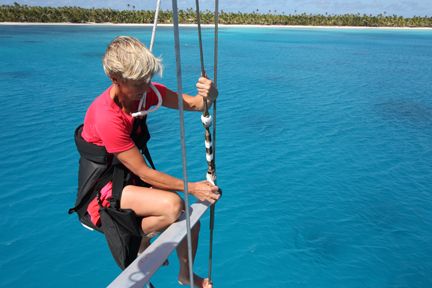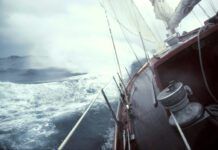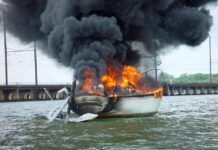Early Asian-built sailboats had hardware and fittings especially tangs and turnbuckles that came from backyard foundries where little or no concern was given to the mechanical and chemical attributes of different alloys. Their approach to marine metals was based more upon how the metal looked, rather than how it would hold up under load. Voids and alloy problems in cast bronze and stainless rigging components became so widespread in the 1970s that many riggers told new owners to change the turnbuckles and toggles before they sailed their new boats. Even though the hardware looked like components made in the U.S. or Europe, the castings were far inferior. In that time period, Asian quality control during the alloying of non-ferrous metals was primitive at best, and the old adage “all that glitters isn’t gold” certainly held true for silicon bronze, an alloy that’s usually a superior choice for rigging hardware or submerged applications. Slight variation in the content and purity of the alloying metals will taint the recipe and change the metal’s mechanical as well as corrosion resistance characteristics, so quality control is imperative.
Little shortcuts can have serious ramifications, so the new owner of an older Asian-built boat would be smart to pursue a rigging hardware upgrade. Replacing the turnbuckles and toggles with U.S. or European product is money well spent. Older Chinese-built boats, in particular, have been plagued by unreliable metal components.
Circumnavigators and three-decade live-aboard cruisers Al and Beth Liggett had a box full of fasteners and hardware that died an early death aboard their able Perry-designed cruiser Sun Flower, which they had built in the Orient. Cyclic loading and working strains are expected to eventually wear out components, but the life span of a fastener or piece of hardware is drastically shortened if the metallurgy has been inconsistent.
This is anything but a xenophobic bias. I’ve spoken with riggers across the country who have alluded to a disturbing trend associated with Chinese hardware and have shown me boxes filled with fractured turnbuckles, corroded tangs, and what-not.
Imminent failure is sometimes heralded by visibile signs, as with these weeping tangs.
collections of broken bits and pieces. Marine metals were the Achilles Heel of these imported boats from the ’60s well into the ’80s when savvy builders started shipping U.S. and European hardware to China despite the cost.
For additional advice on rig inspections, purchase Boat Owner’s Mechanical & Electrical Manual from Practical Sailor.










































